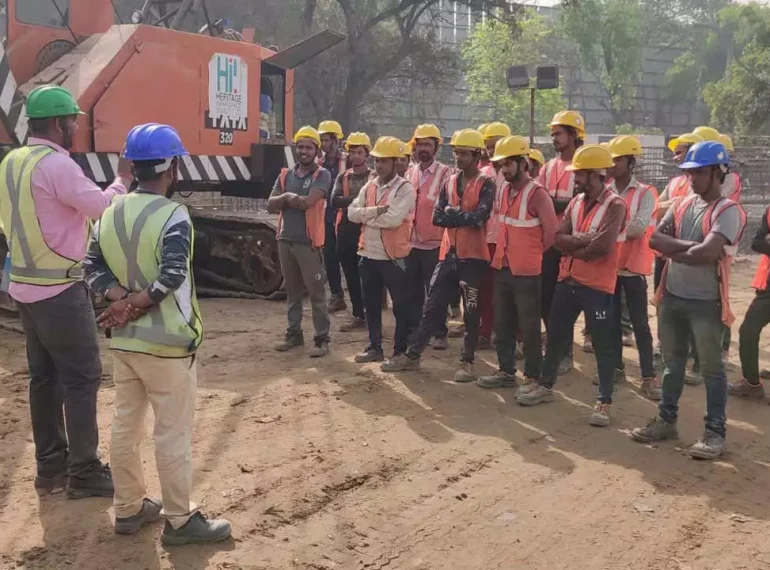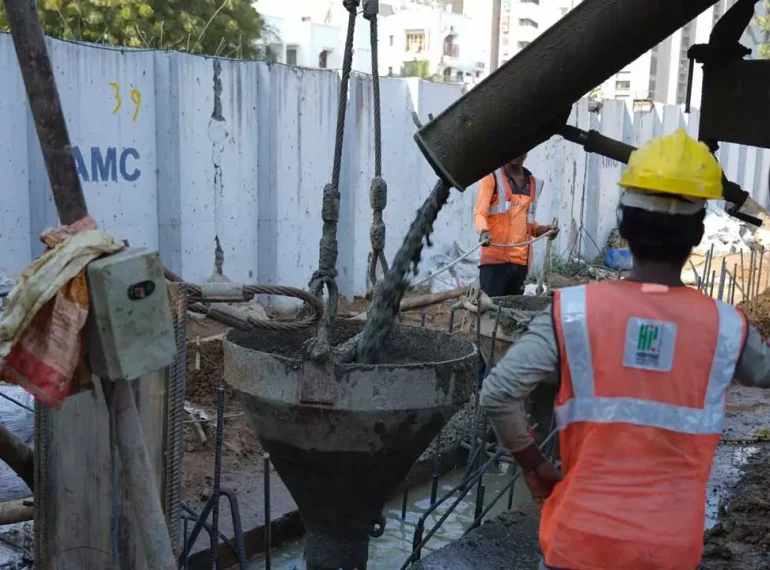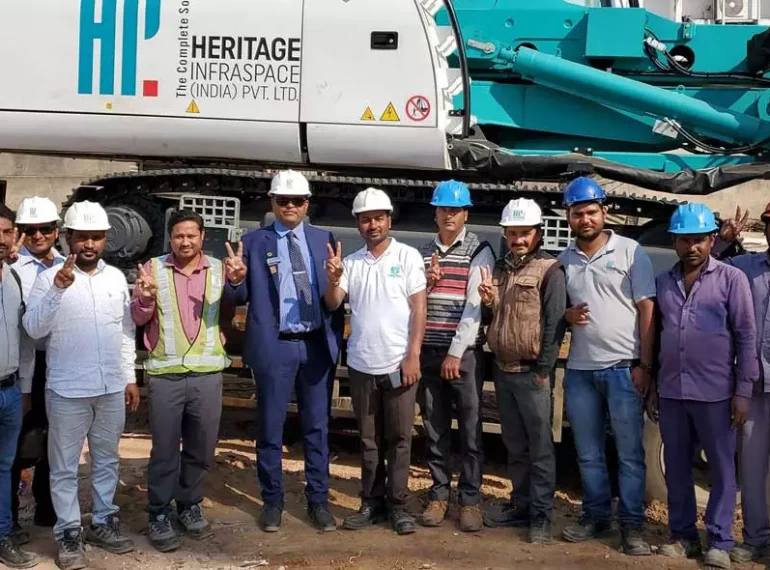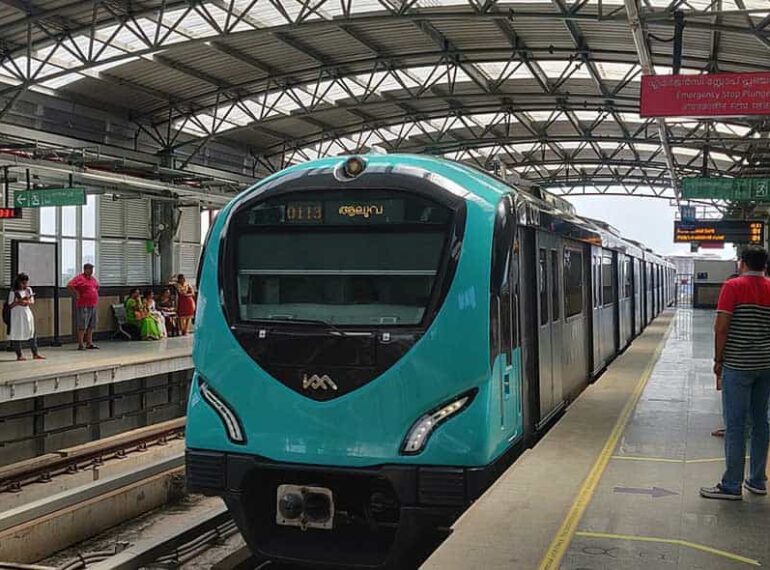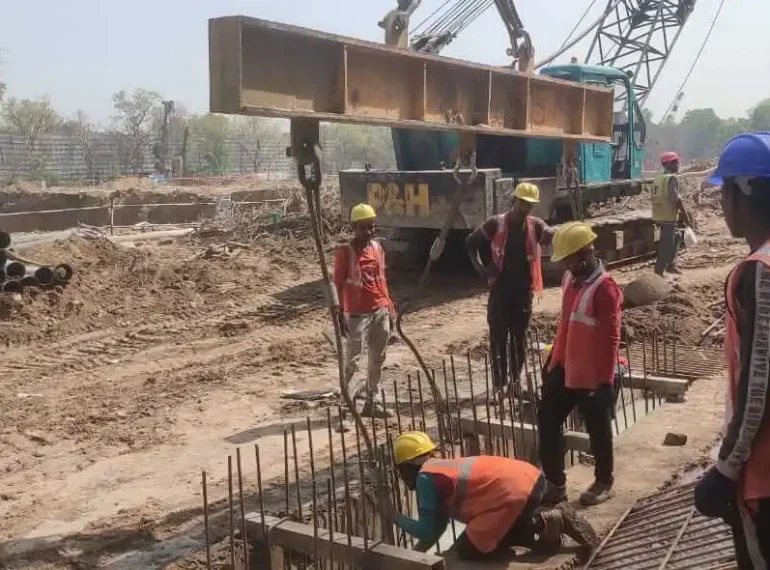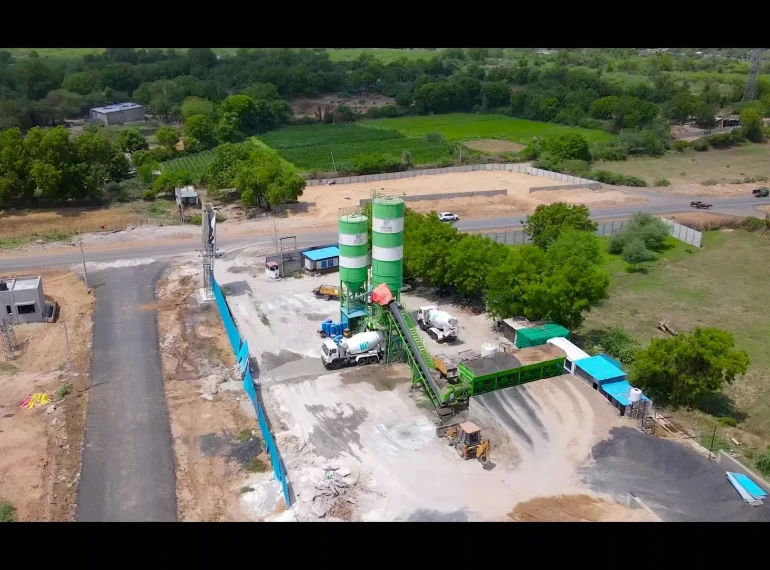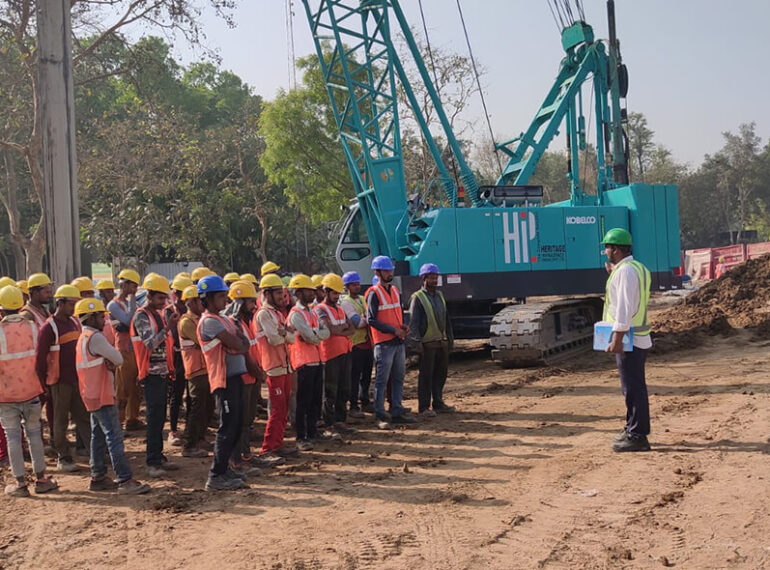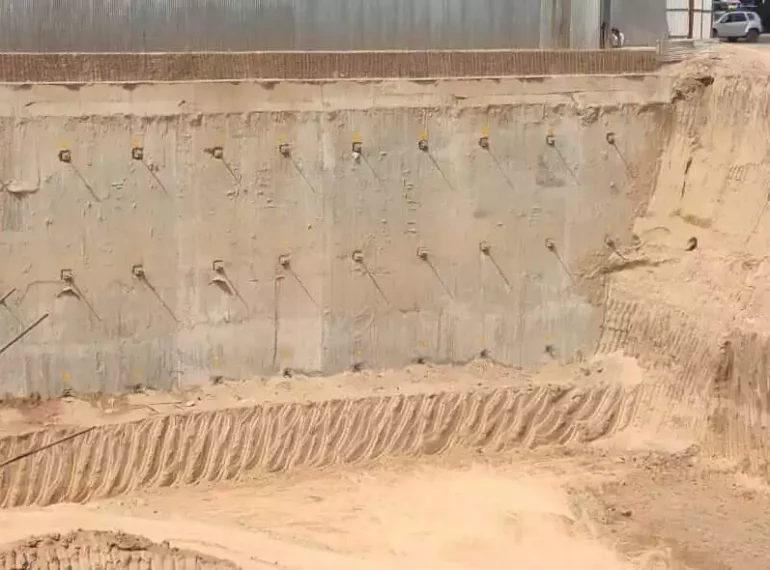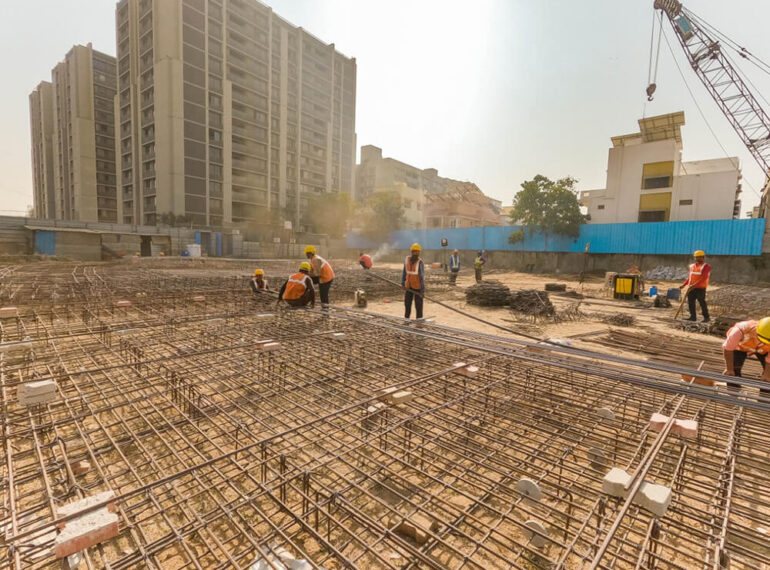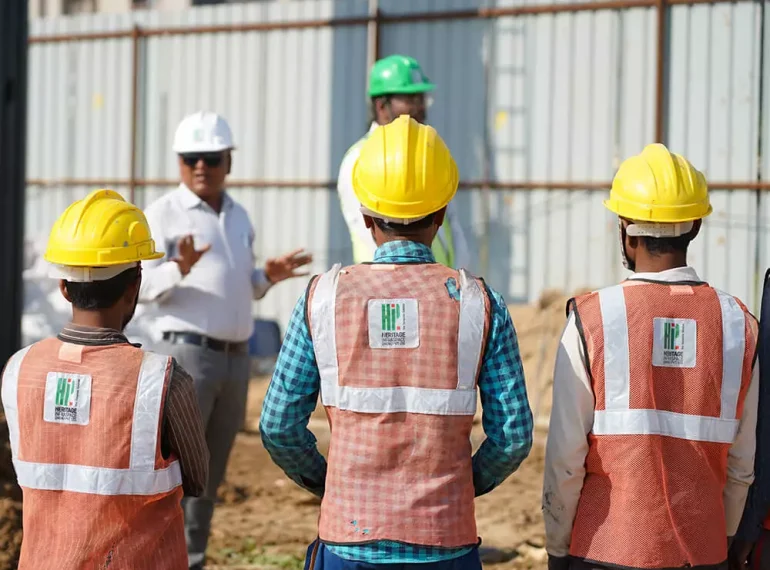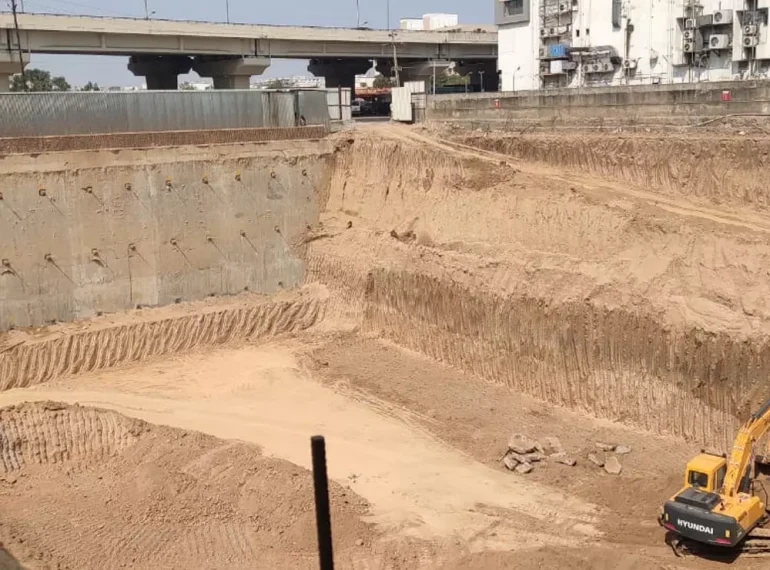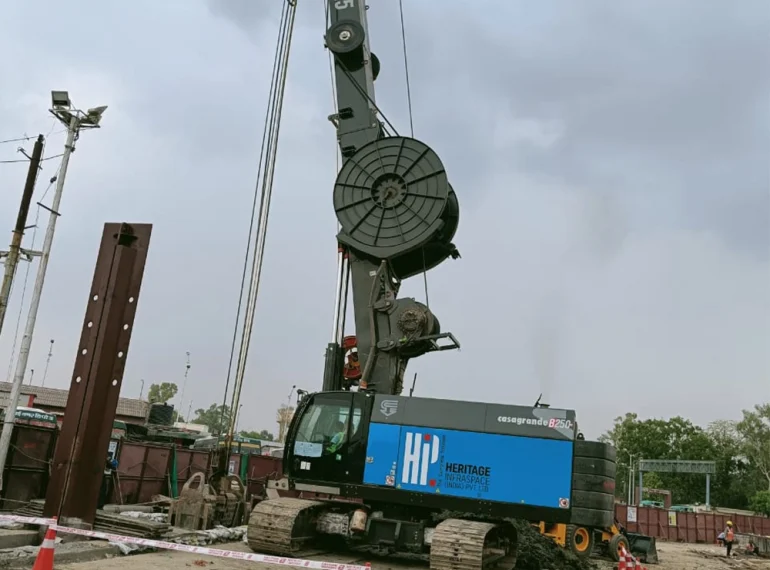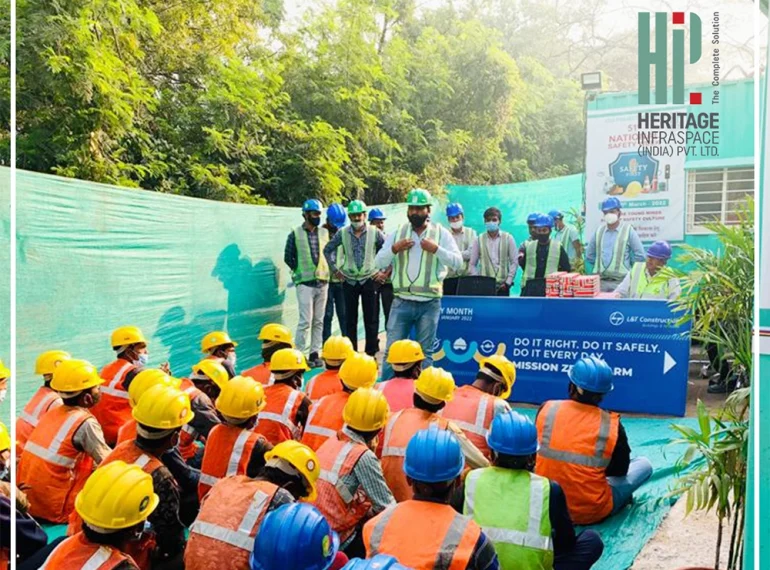Right from metro rail construction to new age super structures like towering residential and commercial complexes, building of concrete diaphragm wall has become a common practice and projects are now seeking only the best diaphragm wall company, like HIPL, to be building these D-Walls. But, what exactly is a diaphragm wall, and how does it help building structures? Here’s everything you need to know.
What is a concrete diaphragm wall?
Diaphragm walls or slurry walls are generally reinforced concrete walls, constructed in the ground using an under-slurry technique developed in Europe. This technique involves excavating a narrow trench that is kept full of an engineered fluid of slurry. This way, walls with thickness ranging between 300 mm to 1200 mm can be formed as deep as 45 metres underneath. Inclined rock or soil anchors are used for this purpose. Diaphragm walls are commonly used while constructing structures with deep basements in congested areas, as they can be installed in close proximity to the existing structures.
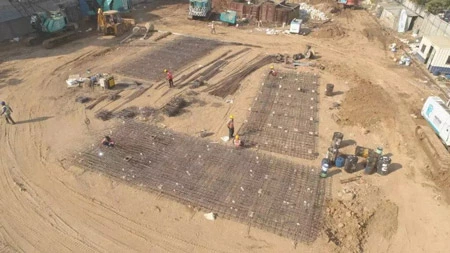
Previous history of diaphragm wall being used in construction in India
The earliest recorded use of diaphragm wall technology is said to be during the excavations for the construction of Milan Metro in Italy back in the 1950s. In India, this technique can be traced back to the construction of metro rail stations and tunnels, Kolkata Metro being the first ones.
This is a civil engineering technique of construction, pioneered by Heritage Infraspace in deep basement diaphragm walls in India.
Now, in metro construction, D-walls ranging between 800 to 1200 mm are built. But while constructing deep basements for residential and commercial complexes, there are varying sizes used, they are as follows:
-
- For a single basement construction, we build 300 mm diaphragm walls
- For a double basement construction, we build a minimum 400 mm diaphragm wall
- For a 3-basement construction, we build a minimum 500 mm diaphragm wall
- And for a construction of 4-basement or more, we build diaphragm walls starting at 600 mms.
But here’s a crucial point to remember, all the above depends majorly on the soil strata. For a D-wall to do its job perfectly, the soil must not be loose. D-wall construction makes it cost effective compared to the other older, traditional methods like Piling. The major challenge with Piling, apart from being costly and time consuming, is that it doesn’t maintain the verticality.
The process of constructing a concrete diaphragm wall
HIPL follows a 10-step process of constructing diaphragm walls, as below:
-
- Fixing of Alignment
- Guide wall Construction
- Trenching
- Trench Cleaning
- Stop ends fixing
- Reinforcement Cage lowering
- Placing of Concrete
- Withdrawal of Stop ends
- Excavation and Anchoring
- Stressing and Final Level of Excavation
A diaphragm wall is an economical and positive solution for a large deep basement in saturated and unstable soil profiles. It can be installed to considerable depth with the formation of walls with substantial thickness. It was usually used for seepage control in dams but now has a flexible system in plan layout and can be easily incorporated into permanent commercial and residential projects. Diaphragm Walls are designed to carry vertical loads, thus reducing the construction time of the basement. Further, the noise levels are limited to the engine noise only and there’s no vibration during its installation.
How does a diaphragm wall built by HIPL work help in the construction of a super structure?
Unfortunately, there isn’t much research and development done in the construction of concrete diaphragm walls in India, and HIPL is striving towards educating and bringing in innovation in underground excavation and construction of deep basements for superstructures.
Earlier construction of diaphragm walls used to be done in a top down construction method by excavating some soil first and then following the remaining stages. But HIPL uses soil anchors in its diaphragm wall construction for deep basements. Because practising the traditional method of using struts and valors would cost the project a lot of money, and the chances of the wall tilting would continue to be high and risky. We started putting soil anchors. This is done by placing and constructing the soil anchors in each panel of the diaphragm wall, giving the entire slab casting equal support, before being distressed.
Diaphragm walls helping buildings withstand damage
In 2021, at a project site in Ahmedabad, Gujarat, open excavation had been conducted haphazardly, avoiding the construction of a diaphragm wall for a deep basement. This resulted in the boundary wall of one of the neighbouring structures falling off. Fortunately and miraculously there weren’t any fatalities and HIPL were contacted to help fix this crucial part of the construction. Our team of engineers and workers first did the backfilling activity for the damaged section of the excavated section, as building a D-wall on loose soil is extremely difficult. In order to hold the soil, our engineers used bentonite fluid. This way, by walling the damaged segment of the excavated part of the project, we ensured that no further damage happens to the neighbouring buildings and their soil base.
Crucial technology and machinery used in constructing a diaphragm wall
HIPL has always believed in using only the best equipment, machinery and technology in all of its projects. Currently, HIPL owns over 22 hydraulic rig machines spread across multiple ongoing project sites all over India
The fleet also consists of Anchor Rigs with Compressors, Crawler Cranes, JCB earth movers, and other types of excavators.
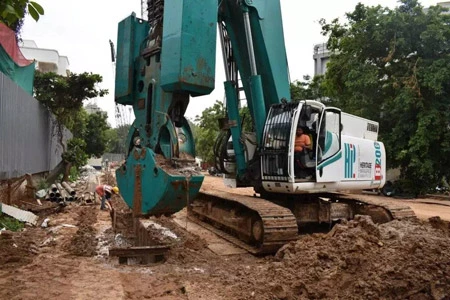
Major ongoing & constructed projects where HIPL has built diaphragm walls
Some of the most prominent superstructures and projects have been assisted by HIPL with the construction of diaphragm walls for deep basements and foundation. They include the commercial complex by Adarshini Real Estate Pvt Ltd under Hines, DLF Downtown, DLF Midtown in Gurugram, the ambitious Central Vista project for the Government of India in New Delhi and ongoing metro rail projects like Delhi Metro and Kanpur Metro.
Drop us an email on info@heritageconstruction.in to know more about what we do, including concrete diaphragm walls and deep basement diaphragm walls, and how we could help your next big project become a landmark of strong and safe construction.





